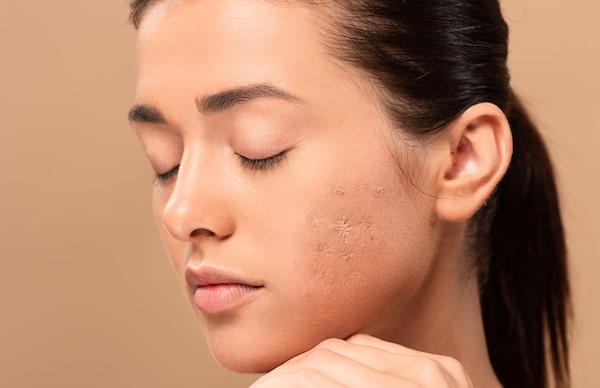While it is not always the case, there is a good chance of scars appearing on the treated part of the body after a surgical procedure. The idea of scarring on the body is not one that many people find appealing, so they turn to cosmetic surgery procedures to try and lessen the extent of the scarring and even reduce their appearance to the point that they fade on the skin. One technique that patients often use to address the appearance of surgical scars is microneedling. Take a look at the informative article below to learn more about how microneedling addresses surgical scars.
Microneedling – How it Improved the Look of Scars
A small study has suggested that microneedling can help surgical scars heal in a more aesthetically appealing manner if it is performed within a couple of months of the formation of the scars.
Researchers discovered that microneedling improved the long-term look of scars in twenty-five patients, after various surgical procedures, according to the ratings and feedback of both doctors and patients. It was also revealed that the sooner microneedling was performed, the better the extent of the results. For example, patients who decided to have their first microneedling treatment within six or seven weeks of having a surgical procedure saw the best results. These results are actually the opposite of past ideas about when to have microneedling as many doctors would advise their patients to wait and have microneedling until the scars were at least a year old.

Microneedling – What is it?
Microneedling is a procedure that is also known as minimally invasive percutaneous collagen induction. During the treatment, the doctor uses a hand-held device that has a tiny needle that creates micro-punctures in the skin of the patient. The procedure is able to stimulate the production of collagen to help the skin maintain a look that is smooth and firm. It is often performed to address issues with the skin such as stretch marks and wrinkles as well as reducing the look of scars caused by acne or surgical procedures.
One of the reasons that doctors would tell patients to wait about a year to treat their scars is the fact that scars will often “mature” for about twelve months. However, this also means that patients are missing a chance to enhance the ability of the skin to repair itself.
Microneedling and Scarring – Study Results
According to Dr. Brannon Claytor, lead researcher and the Chief of Plastic Surgery at Main Line Health, and also Claytor/Noone Plastic Surgery in Bryn Mawr, PA, surgical wounds are far enough along in the healing process to start microneedling sessions around six weeks after surgery. Dr. Claytor feels that this time period is safe enough to improve the appearance of scarring.
In a study published in Plastic and Reconstructive Surgery, the team led by Claytor studied twenty-five female patients who were seeking some form of treatment for the scars that appeared after a surgical procedure. Some of the surgeries that the participants had included tummy tuck, facelift, breast surgery, and the removal of skin growths that were non-cancerous.
Each of the patients started the first microneedling treatment, out of a series of three treatments, within six to sixteen months after their surgery. The women who took part in the study also followed a skincare regimen during this time period.
When they were examined sixteen weeks after their first microneedling treatment, each of the patients showed an improvement in the look of their treated scars as opposed to patients who started their treatment anywhere from thirteen to sixteen weeks after a surgical procedure.
Claytor said, “Early treatment of acute scars was safe. And the really exciting part was, we found evidence that it improved patients’ results.” The research team did acknowledge that the study was small in size and that the results offer doctors and patients a “proof of concept” that an earlier treatment is a better idea than waiting until later in the healing process.
It should be noted that the study did not have a comparison group of patients who had scars that were left untreated by microneedling to heal on their own. The lack of a comparison group makes it difficult to assess how much of the improvement in the scarring was due to the microneedling treatment and how much was due to the natural healing of the scars.
Having said that, it was easy to notice the difference between the look of the scars that were treated earlier than the scars that were treated at a later time by a doctor.
Patients also need to realize that each person is different which means the results of their healing process might not be the same as other patients. They should schedule a consultation appointment with a doctor who is experienced in treating scars after a surgery with microneedling in order to get a better idea about the type of results they can expect to see after microneedling is performed on their scars.
